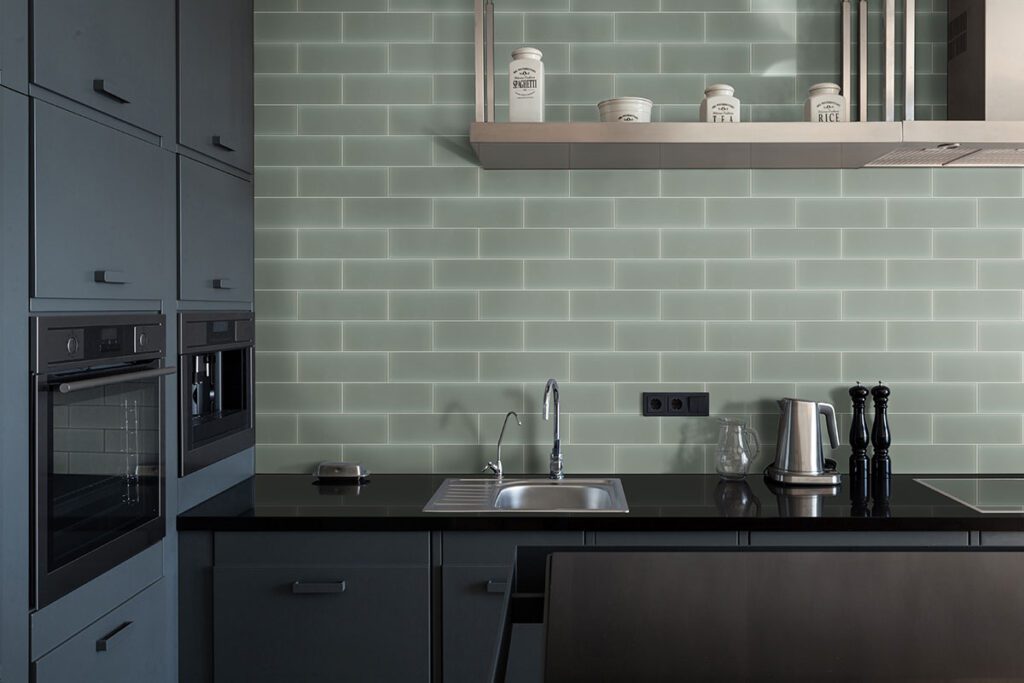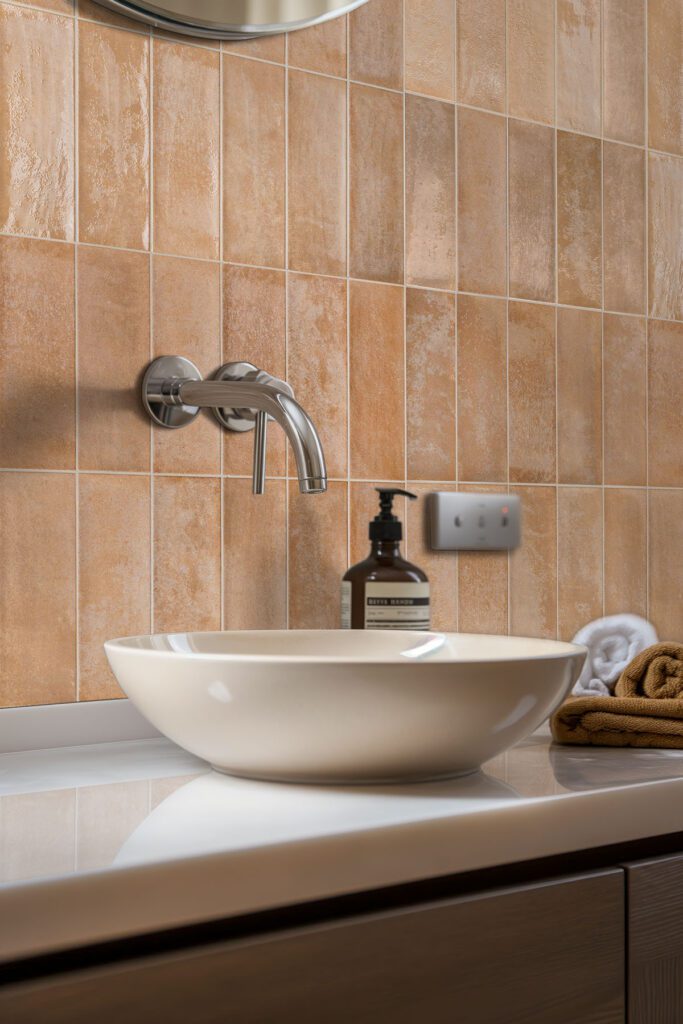A subway tile backsplash is a timeless choice that adds a touch of classic elegance to your kitchen. With its clean lines and versatile style, it complements a wide range of kitchen designs, from modern to traditional. Subway tiles have a rich history, originating in the early 1900s in New York City’s subway stations, and have since become a popular choice for kitchens across Long Island and beyond. A tile is usually considered a subway tile if it has a 1:2 ratio of width to length, though some can go as long as 1:4. Some of the more common subway tile sizes are 2×6, 2×4, 3×6, 4×8, 4×12, and 4×16. Laying a subway tile backsplash might seem intimidating, but in this guide, we’ll walk you through the different laying patterns options including the herringbone, vertical bond, running bond, basketweave, and stacked bond patterns.
If you’re still deciding on your backsplash color, check out our guide on How to Choose a Backsplash Color for Your Kitchen. For more general tips on backsplash installation, visit How to Install the Perfect Kitchen Backsplash.
Running Bond Subway Tile

The running bond pattern, also known as an offset pattern, is one of the most popular ways to lay subway tiles. This pattern is the most reminiscent of NYC subway stations and has a retro feel. In this pattern, each tile is offset by half the width of the tile below it, creating a classic brick-like appearance. This layout is versatile and works well in both traditional and contemporary kitchen designs.
Stacked Bond Subway Tile

The stacked bond pattern, also known as a “stack bond,” “straight lay” or “straight stack” pattern, is a more modern take on subway tiles. Unlike the running bond, where tiles are offset, the stacked bond aligns tiles directly on top of each other, creating clean, straight lines. This gives a sleek and contemporary look, while still maintaining the simplicity of the running bond. Both patterns offer a timeless feel, but the stacked bond brings a more structured and minimalist aesthetic to your kitchen.
Vertical Subway Tile Backsplash


Vertical subway tiles are a creative twist on the classic layout, where the tiles are installed vertically instead of horizontally. This pattern can be used in both running bond and stacked bond formats, adding height and visual interest to your space. Vertical subway tiles share similarities with the traditional horizontal layouts but offer a more dynamic and modern look, making them a great choice for smaller kitchens or for adding a unique focal point.
Herringbone Subway Tile Backsplash

The herringbone pattern, also known as a zigzag pattern is a much more traditional way to lay subway tiles compared to the retro running bond or the modern stacked bond and vertical patterns. In this layout, tiles are arranged in a V-shaped, zigzag pattern, which adds a sense of movement and classic charm to your backsplash. The herringbone pattern is ideal for homeowners looking to achieve a timeless, elegant look with a touch of complexity.
Basketweave Basksplash

The basketweave pattern is a classic and visually interesting way to lay subway tiles. In this pattern, tiles are arranged to create the appearance of woven strips, much like a basket. This design is more intricate compared to the running bond or stacked bond and adds texture and a touch of old-world charm to your kitchen, making it ideal for those who want a more decorative backsplash.
Get Your Long Island Tile
Now that you’re ready to get started on your tile backsplash, request a quote to get everything you need. You can also visit our Long Island masonry yard in Deer Park, NY, to browse our inventory, see samples in person, or place an order to bring your project to life.

